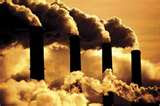WHAT AN AVERAGE TEMPERATURE RISE O F 4 °C WOULD REALLY MEAN FOR THE PLANET
OVERVIEW
The average rise will not be spread uniformly, and temperatures over land will be significantly higher (5.5C on average) than over the ocean, as the land heats up more quickly than the sea.
THE ARCTIC
Temperatures at higher latitudes, particularly in the Arctic, will rise much more steeply in a four-degree world as they experience climate feedbacks due to the loss of sea ice and snow cover.Already, scientists have detected signs of unusual permafrost melting in Siberia and the release of vast quantities of underground methane, a powerful greenhouse gas.
SOUTHERN EUROPE
The summer of 2003, when night-time temperatures were far beyond normal, caused many thousands of deaths through heat stroke and other related conditions. A four-degree world will make such summerscommonplace, causing environmental as well as medical problems.
INDIAN SUB-CONTINENT
A growing population puts pressure on water supplies, which will be exacerbated in regions of the world that will experience the greatest increase in numbers of people, such as India. In a four-degree world, however, the problems of water shortages will be primarily caused by climate change – a double whammy for the most populated countries.
AMAZON
At higher temperatures, the Amazon rainforest is vulnerable to drought and uncontrolled spread of fires. Some climate models predict increased rainfall, while other "more realistic" computer projections predict severe drying in the Amazon.
SOUTH-EAST ASIA
Sea level rise is inevitable in a warmer world, but the problem will be significantly worse in a four-degree world because of melting ice sheets, glaciers and thermal expansion. Low-lying, heavily populated river deltas and coastal regions are especially vulnerable to flooding. Small oceanic islands will experience increased storm surges and problems with increased soil salinity.
SUB-SAHARAN AFRICA
At 4°C, virtually all cereal-growing regions of the world experience crop failures or shortages. The areas affected most will be semi-arid regions where agriculture is already difficult, such as parts of sub-Saharan Africa. Some regions may become uninhabitable with widespread famine
source:
http://www.independent.co.uk/environment/climate-change/200-nations-one-mission-to-repair-the-mess-left-by-copenhagen-2146235.html




